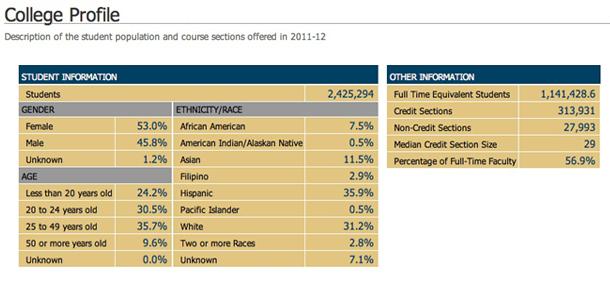Once again, the Student Success Task Force is doing what it does best: attempting to improve community colleges while actually leading them down a spiraling path to destruction.
The SSTF was created to “develop a strategic blueprint to help community college students to succeed,” according to a press release from the California Community Colleges Chancellor’s Office on Jan. 18, 2011.
Since then, The Connection has blasted the task force for only making college less accessible to students. Unit caps have been placed on priority registration, caps on Board of Governors Fee Waiver eligibility were set and success was defined as completing certificates, degrees and transferring to universities.
While these may sound like smart moves, in the end these recommendations have only proved to limit accessibility to community colleges.
And now the SSTF has released a “College Success Scorecard” for all community colleges located in California.
The scorecard will “track a college’s certificate and degree attainment and transfer rates, persistence rates and ‘momentum points,’ such as the completion of 30 units, which is typically considered to be the halfway mark to transferring to a four-year institution as a junior or completing an associate degree,” according to a press release from the CCCCO on April 9.
Colleges will be scored based on their own past performances and not against one another, according to the press release. While the previous statement may be what it inteded, it will never hold true.
Parents and prospective students will definitely compare colleges against one another when looking to start in community college, especially in areas packed with choices, such as the Los Rios Community College District, where students have a choice of attending four colleges. American River College, Cosumnes River College and Sacramento City College already see overlapping students, who is to say one college won’t end up stealing a larger share from the others?
The next step will be for policy makers to begin to fund community colleges throughout the state using outcome-based funding. While this may not be implemented yet, it is already something that the SSTF has debated.
The scorecard will also measure success “by race, ethnicity, gender and age to help them focus on closing performance gaps.”
“We have moved from a society in the 1950s and 1960s, in which race was more consequential than family income, to one today in which family income appears more determinative of educational success than race,” said Stanford University sociologist Sean F. Reardon in a February 2012 article by the New York Times.
The fact that the scorecard would measure success along stereotypical, outdated lines speaks to the thought put into the scorecards. Measuring by socioeconomic class makes more sense, but the task force would much prefer to measure along lines of race and gender; lines which are becoming more blurred as time goes by.
The task force is trying its best to give students an idea of how to improve themselves and further their education, but the ways that it’s going about it is backwards.
Until someone corrects the misguided group, community college students will find their road becoming increasingly tough to navigate.


Chris • Apr 27, 2013 at 3:38 pm
I’d like to get more details on precisely how this will negatively impact the college. This editorial states that it WILL limit accessibility to community colleges, but doesn’t clearly outline HOW.
Online Editor • Apr 27, 2013 at 11:42 pm
We will be posting online a news piece on the College Scorecard, that ran together with this editorial in our print edition, tomorrow that goes into more depth about the ways that these changes could very well affect community colleges and accessibility.